Nestled within 267 pages of David Allen’s famous time management book, Getting Things Done, is a powerful and often overlooked productivity tactic. Between advice on painstakingly setting up the right buckets for your tasks and implementing a comprehensive weekly review where you “get clear, get current, and get creative”, he shares a technique you can use immediately –– the two-minute rule:
“If an action will take less than two minutes, it should be done at the moment it’s defined.”
Simple, yet potent, this rule is a defense against procrastination and letting the small things in work and life add up. Following this guideline can spring us into action, completing tasks quickly instead of leaving them forever undone.
As simple as the two-minute rule sounds, it’s worth understanding Allen’s reasoning behind the concept and why it’s such an effective tool in your productivity arsenal:
“If the next action can be done in two minutes or less, do it when you first pick the item up...The rationale for the two-minute rule is that it’s more or less the point where it starts taking longer to store and track an item than to deal with it the first time it’s in your hands—in other words, it’s the efficiency cutoff.”
Often it’s small tasks that pile up on our to-do lists, fill us with dread, and eventually feel insurmountable. Generally speaking, responding to an email, watering a plant, tidying your desk, filing a receipt, or wiping down a mirror are all tasks you can complete in 120 seconds or less. But, taken together and left to collect, they add up to a laundry list of chores that we continually put off. As a result, we spend more time and energy thinking about how we haven’t done them yet and feeling guilty about it than we would have spent just doing the things in the first place.
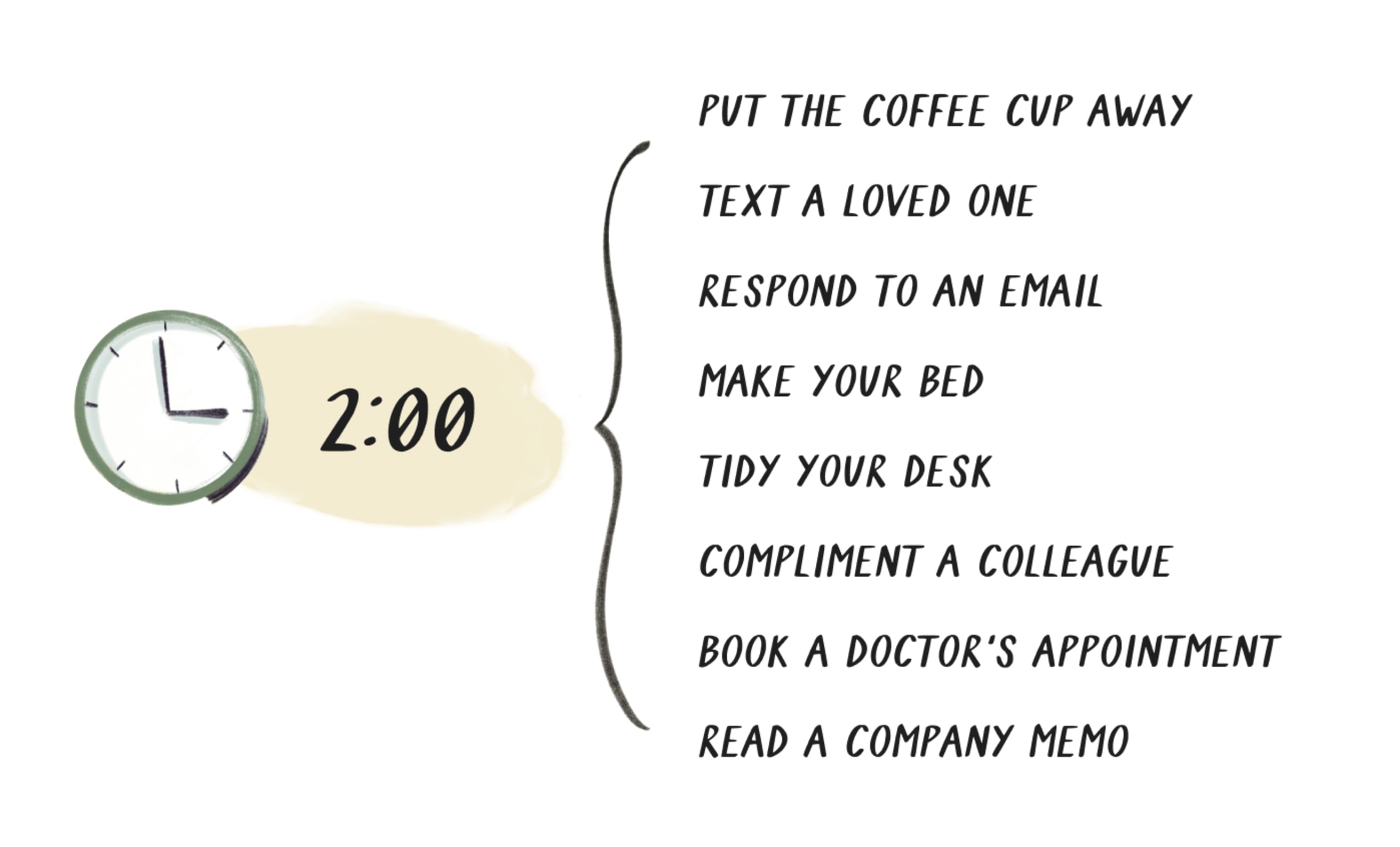
This article dives into the advantages of completing quick tasks as they arise, precise ways to implement the two-minute rule, and how to avoid the context-switching trap once you adopt this newfound productivity guideline.
Two ways to apply the two-minute rule
The two-minute rule is both simple and dynamic. Whether you’re completing a quick one-off task or breaking off a small piece of a larger project, using this guideline can help you push past the paralysis of procrastination and get more done.
Completing quick tasks
As we move through our days, task to task, it’s not always time-consuming to-dos and enormous projects that induce stress.
Instead, it’s the doctor's appointment we need to book or the email we need to send that linger on our task list for days or weeks. What could be a quick task we complete right way becomes a point of procrastination. A tiny to-do can take on a life of its own in our minds, haunting us as we drink our morning coffee and nagging us as we call it a night.
On the flip side, you’ve probably experienced this feeling too: After those days or weeks of postponing tasks like “dust the banister” or “responding to an email”, you muster the energy to begin and find yourself done just as quickly as you started. Why was there all this buildup and dread for a task that took no time at all?
Unfortunately, the longer you put something off, the harder it feels to accomplish it. To avoid this phenomenon, tackle tasks as soon as they arise or shortly thereafter to avoid them building up in the first place.
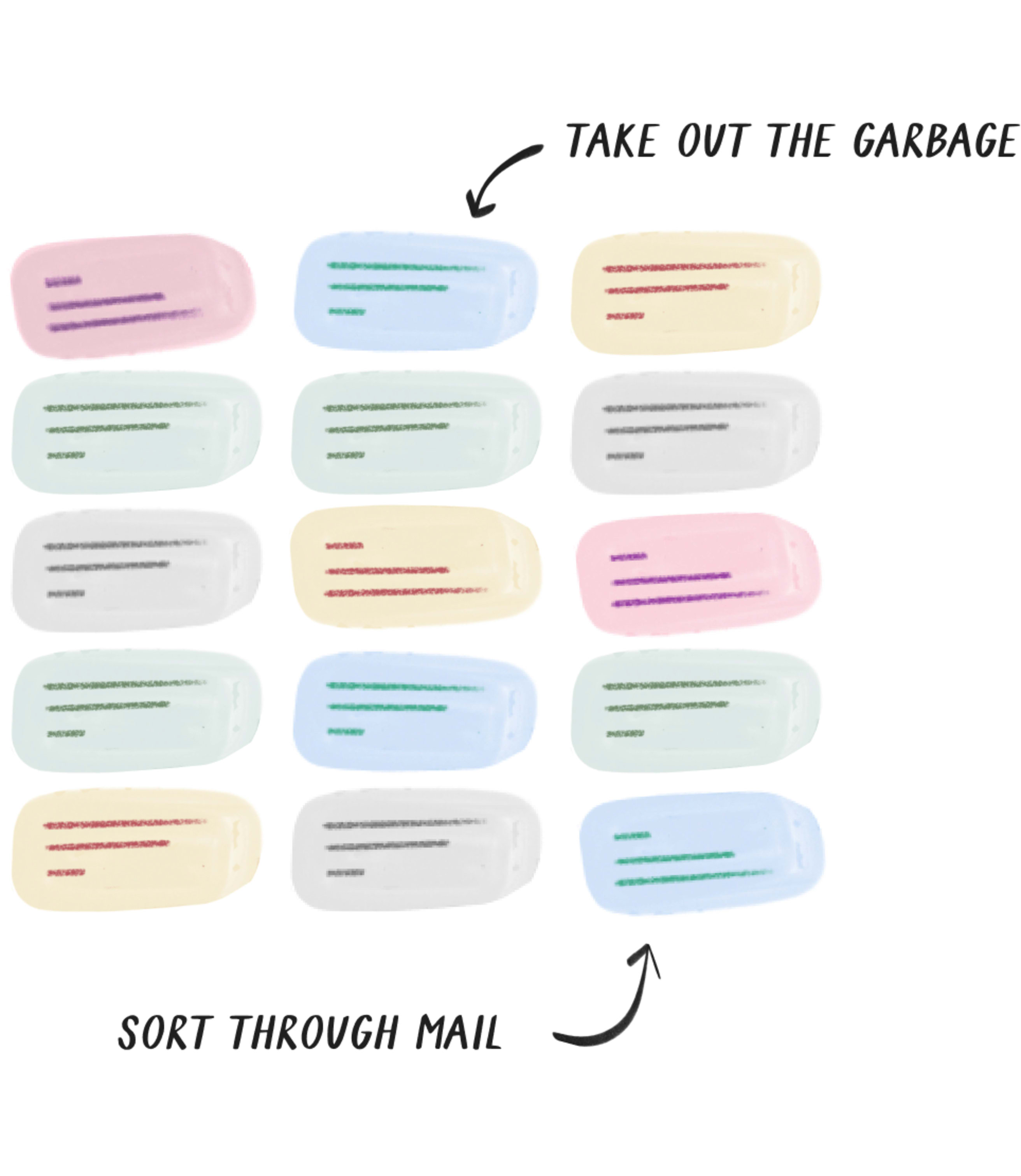
You can apply the two-minute rule to any number of the random and unconnected tasks that come up throughout your day –– from taking out the garbage to sorting through mail.
Starting a big task
On the other side of small tasks are the big ones. These are the ambitious and often ambiguous projects that we avoid because we don’t know where to start. It’s the 3000-word history paper that starts as a blank Google doc or the job search we need to begin.
But you can’t scale a mountain in one fell swoop; you have to climb it one step at a time. Luckily, some of these steps aren’t so hard when we consider each one individually.
That’s where the two-minute rule comes in. You can break down any big task or large project into quick bites that allow you to get started, sustain momentum, and complete an overwhelming task two minutes at a time.
By breaking down bigger projects, we can avoid the initial paralysis we feel before starting, and simply get going on a small part. The next time you feel the pull to procrastinate, identify something you can do in just two minutes to get started.
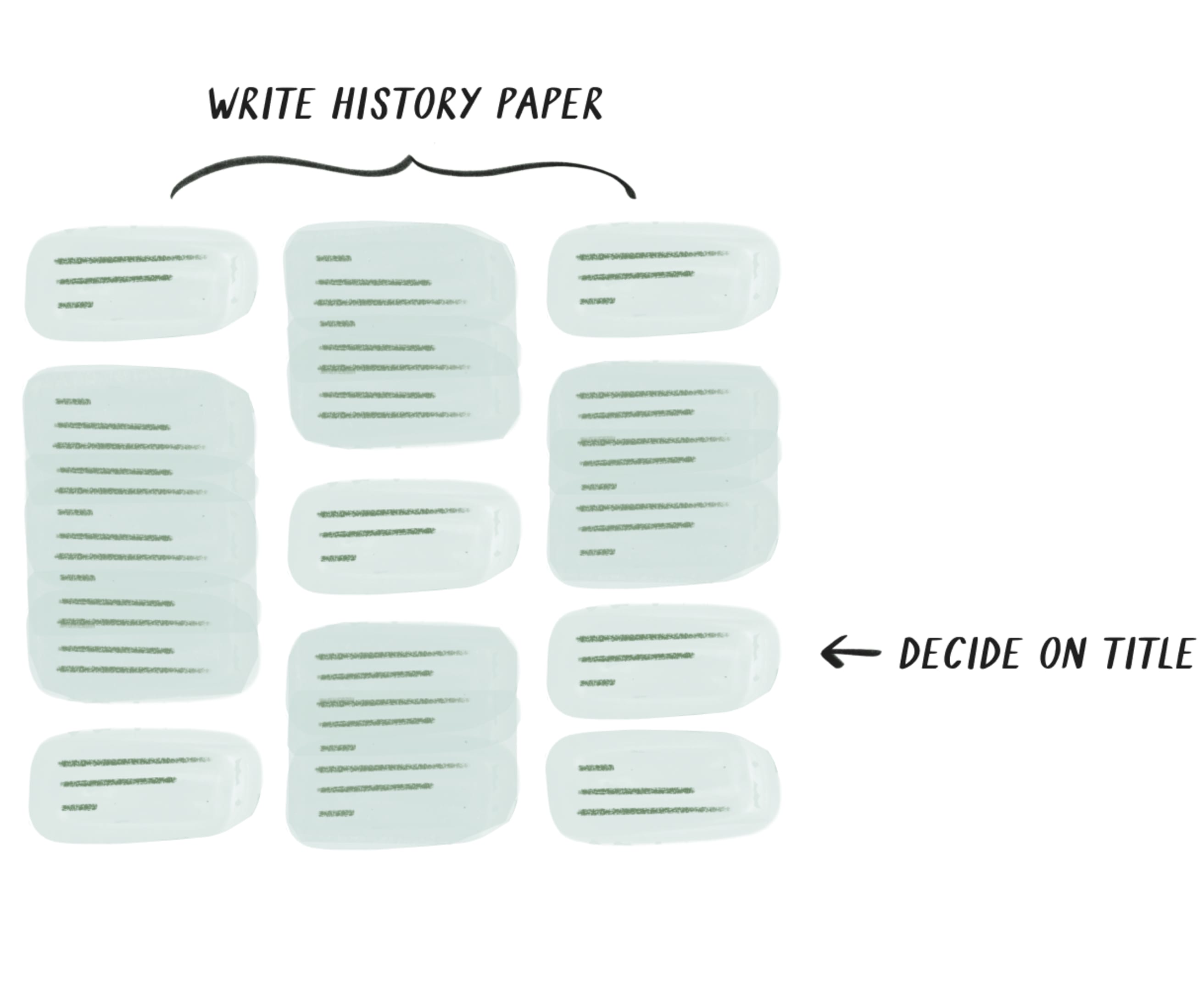
The advantages of the two-minute rule
From Pomodoro Technique to the Eisenhower Matrix, there are a myriad of ways to get things done. There’s no shortage of methods and mechanisms to do more in less time. But the two-minute rule is an anti-method with many of the perks (and productive returns) of a full-fledged system.
No system, no problem
With the two-minute rule, there’s no complex workflow, 4x4 grid, or inbox to input your tasks. Instead, it’s simple and straightforward: do the quick task quickly. For anyone who is tired of process and procedure, this rule is easy to follow and can be implemented immediately.
It prevents procrastination before it starts
Escape the trap of procrastination by avoiding it in the first place. Instead of adding a task to a list and finding time in the near or distant future to complete it, act in the present.
It creates momentum through tiny wins
Often it’s not just one two-minute task that’s lingering in our heads, it’s half a dozen or more: print tax return, pay the internet bill, send thank you text, wipe the counters, pick an essay title, proofread email. When you employ the two-minute rule to complete just one, it often generates a sense of accomplishment that propels you towards the next task. That could mean rapidly responding to an inbox full of emails or going from chore to chore tidying your home office. Action begets more action and the two-minute rule can be the catalyst we need to check off a chain of small tasks that amount to much more.
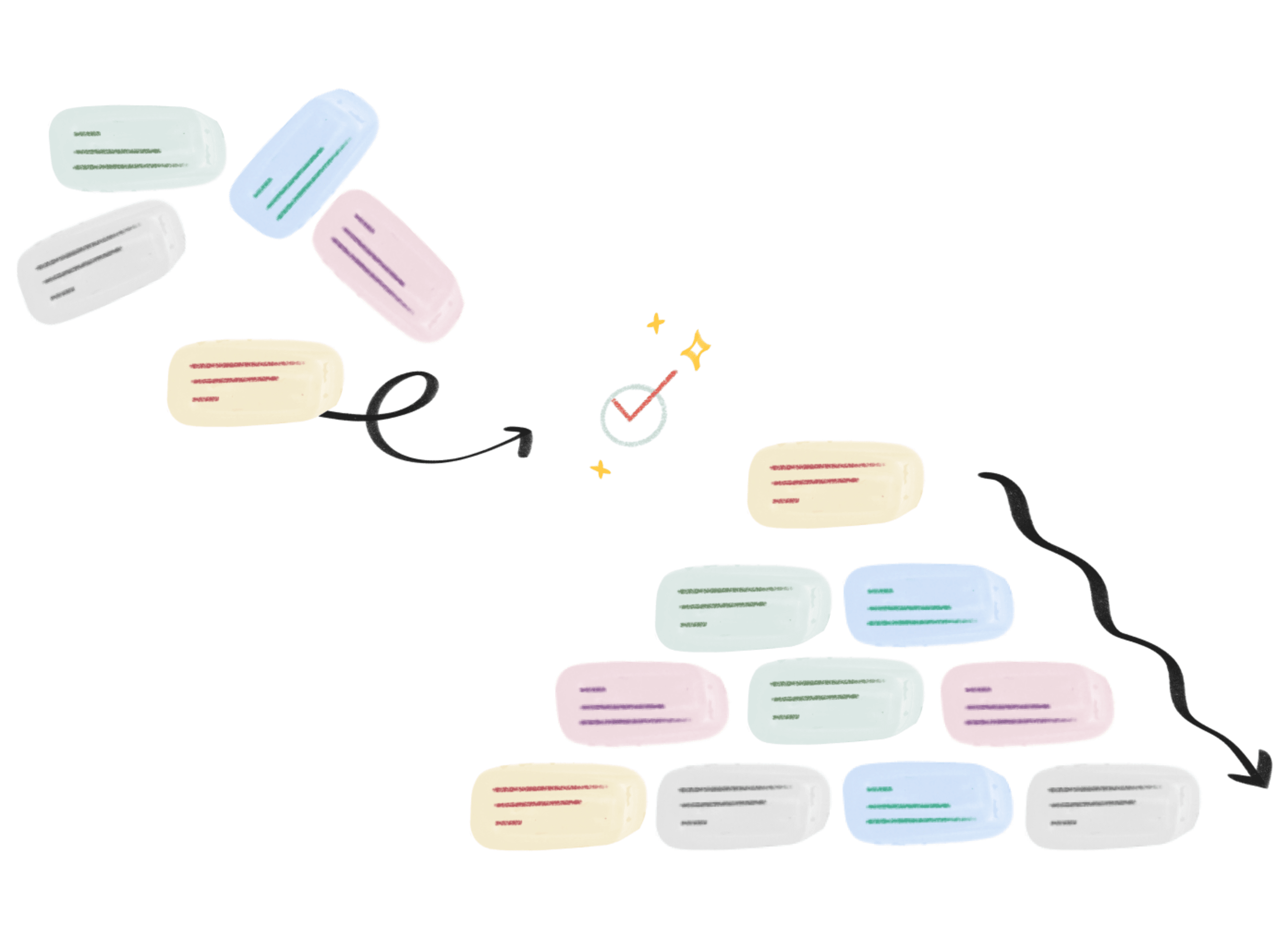
It builds a bias towards action
Following the two-minute rule builds a habit of attacking tasks head-on rather than letting them languish on your list. Moving through tasks with speed and efficiency can become embedded in your identity and become a point of pride. Naturally, you’ll still procrastinate from time to time. However those periods of procrastination will become fewer and farther in between as the satisfaction of action builds.
It’s flexible
While the beauty of the two-minute rule is its specificity, there is flexibility if you need it. Allen suggests that people can expand or shrink time allotted as they see fit:
“Two minutes is in fact just a guideline. If you have a long open window of time in which to process your in-tray, you can extend the cutoff for each item to five or ten minutes. If you’ve got to get to the bottom of all your input rapidly, in order to figure out how best to use your afternoon, then you may want to shorten the time to one minute, or even thirty seconds, so you can get through everything a little faster.”
The two-minute rule in action
Let’s get specific. We’ve pointed to a few examples throughout the article, but what exactly can you complete in two minutes or less? Here are a few everyday tasks you can apply the rule to:
Communicate quickly
Never hold up communication with these two-minute responses:
- Respond to an email
- Respond to a work message
- Reply to a text message
- Provide a requested approval or sign-off
- Request feedback on work
Tips to try for optimizing communication:
- Use audio-to-text dictation to respond to texts and messages more quickly
- Leave voicemail messages instead of adding a call-back to your to-do list
Get rid of chores
- Wash the dishes you just used
- Organize your home office desk
- Water the plants
- Sanitize your mouse and keyboard
- Sweep the kitchen floor
Get rid of digital clutter
- Delete or hide apps cluttering your phone’s home screen
- Organize your computer desktop
- Empty your computer trash folder
- Clear out your email junk folder
- Unsubscribe from annoying emails
Health and self-care
- Pack leftovers for tomorrow’s lunch
- Take a stretch break
- Clip your nails
- Do a quick meditation
Become your own admin assistant
- File a receipt for tax and bookkeeping purposes
- Book an appointment on the phone or online
- Sort and file your incoming mail
- Sign-up for travel alerts
Staying in touch and showing you care
- Send them a quick email or message
- Do something nice thing to do for someone
- Say something kind to a person in your life
- Send someone a note when you enjoy or appreciate their work
- Send follow-ups and thank-yous after virtual networking
Small parts of big tasks
- Write the first sentence of an essay
- Start a Pinterest board for planning an event
- Set out workout clothes for a morning workout
Avoiding context switching with the two-minute rule
Every productivity method has its pros and cons. The two-minute rule is no exception and has a particular productivity-squashing risk: context switching. If we’re not careful, we can find ourselves completing two-minute tasks when we should be prioritizing a long stretch of focus. David Allen recognized this potential trap too:
“That said, you shouldn’t become a slave to spending your day doing two-minute actions. This rule should be applied primarily when you are engaging with new input; for example, processing your in-tray, interacting with someone in your office or home, or simply dealing with some random intersection in the hallway.”
In short, there’s a time and a place to implement the two-minute rule. Quickly popping into our inbox to respond to an email is a distraction when we’re meant to be preparing for an upcoming presentation. However, the two-minute rule can be implemented with care to avoid the trap of context switching.
Block off time for focused work
Not everything can be broken down into neat two-minute segments. Hard and complex work often requires longer stretches of time and intense periods of focus. These periods of time should be blocked off in our calendars as time that’s non-negotiable. During this time, put the two-minute rule on pause. Rather than breaking focus to complete a quick chore, remain in concentration mode and come back to your two-minute tasks at a later time.
Ensure your focused time is bound with definite stop; having an end time is psychologically satisfying, avoids us drifting into distraction, and can be motivating. On a podcast episode of The Tim Ferriss Show, famous comedian and writer Jerry Seinfeld had this to say:
“You have to have an end time to your writing session. If you're going to sit down at a desk with a problem and do nothing else, you got to get a reward for that—and the reward is the alarm goes off and you're done.”
Carve out time for two-minute tasks
We can carve out blocks where we can put the two-minute rule to use. One of the best times to use the two-minute rule is during periods of structured procrastination. During this time, you’re procrastinating on one thing, but focusing on slightly less important tasks.
This is a good time to dip into our inbox, review texts, return phone calls, or refill an online prescription. When we’re avoiding a bigger task, these two-minute tasks can serve as a welcome reprieve.
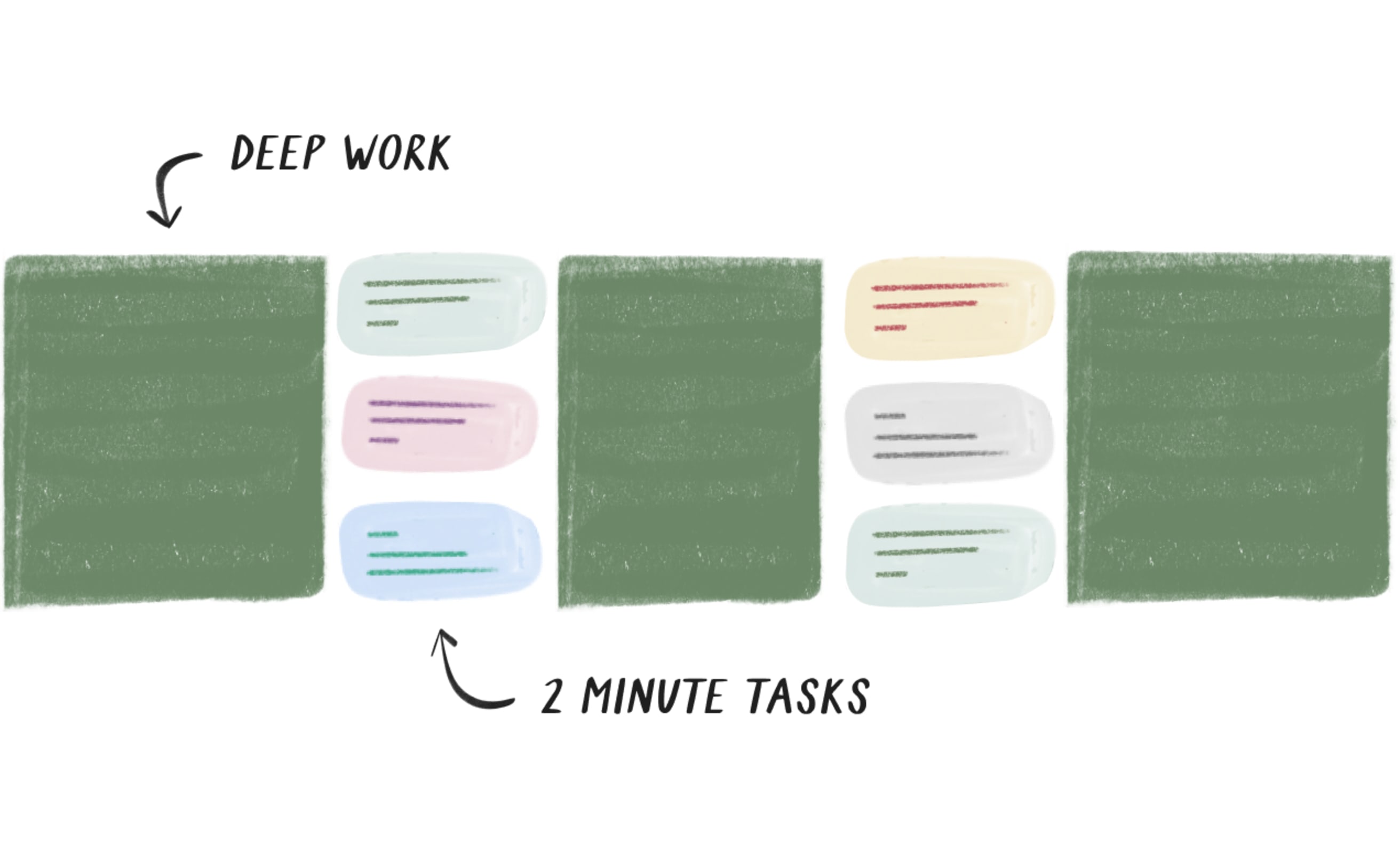
While full-fledged systems like Getting Things Done can help us get more done in the long run, the two-minute rule springs us into immediate action and helps us get to the bottom of our to do list. Whether it’s making your bed in the morning or cleaning up the kitchen at night, focusing on quick to-dos will help you eventually turn the two-minute rule into a two-minute habit.
Many of us are faced with a quick task and choose to put it off for later or avoid it indefinitely. Unfortunately, this becomes a habit loop we enforce again and again, opting to procrastinate on our tasks instead of processing them. But sticking with the two-minute rule can pave a new neural pathway. We can take the same trigger (a two-minute task), recognizing our habitual response (ignoring it), and choosing a different one instead: action. With enough time and persistence, you can build a habit of doing instead of avoiding.

